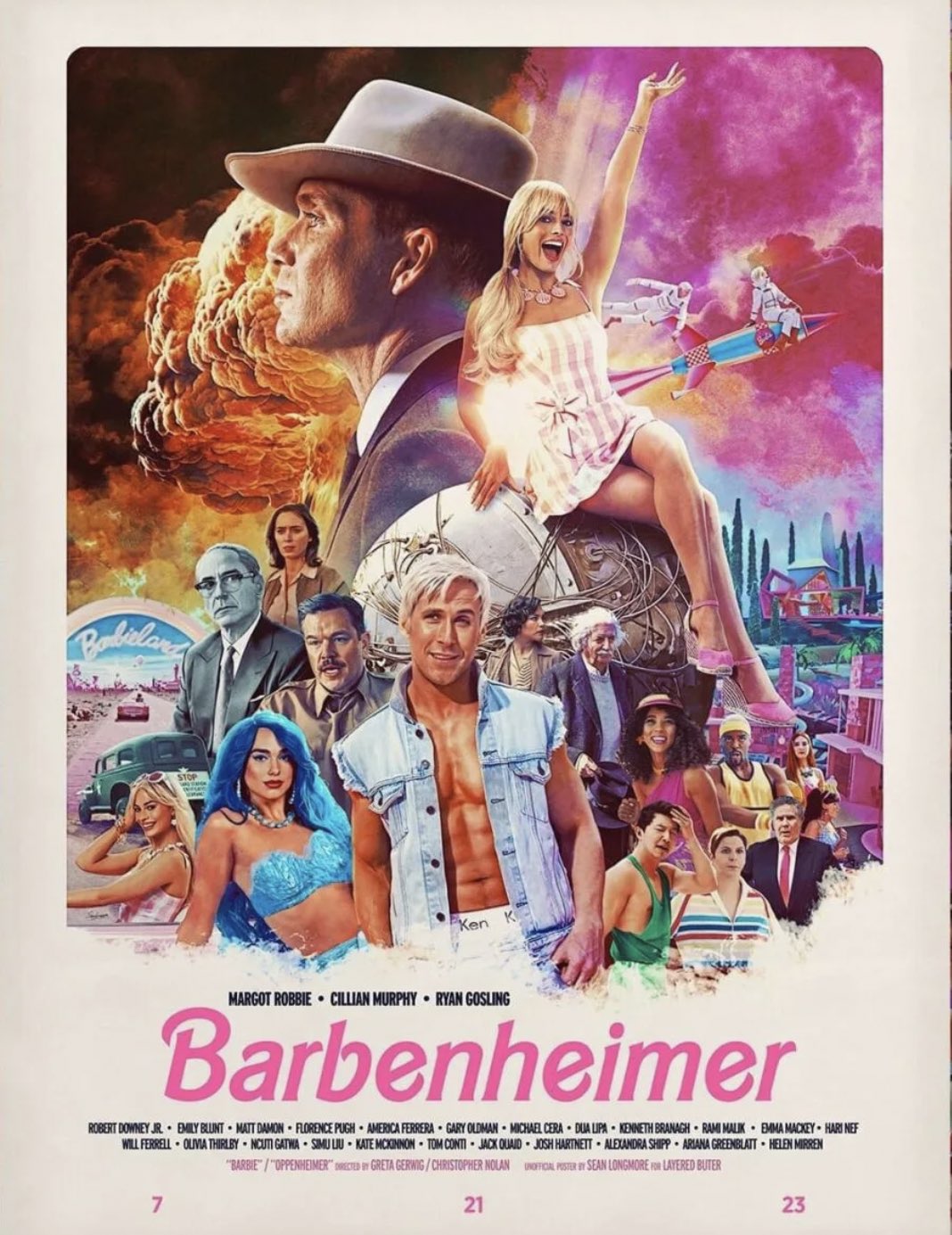The day we’ve all known has been coming is finally almost upon us. This Friday, July 21st, the moviegoing world will be offered two choices – one about the start of the end of the world as we know it, and the other about impending mortality. One is about how we have come to live in the world of fear we know today, the other about the finite time we’re given on Earth. One is backed by one of the most exclusive studio deals ever made, and the other has a marketing campaign that reached far beyond the boundaries of print and advertising.
Two viral promotional endeavors. Two vastly different demographics. The two biggest movies of the year. Yes, we’re talking about Barbie and Oppenheimer. Two films that couldn’t be more disparate will forever be held in the same sentence and breath as each other, resuscitating what moviegoing has long missed: an epic, clashing summer blockbuster event.
But the phenomenon forebodes an eerie quality to it as well, as if this may be one of the last big summer cinematic events we’ll see for quite some time. As fun as these two movies clashing appear to be, that’s exactly what’s at stake: summer movie events of such sizes have become few and far between in recent years. Will one film draw success from the other? Can one steal the other’s limelight? Could that lead to one of these films being the last of their kind? Depending on the successes of either of these films, this weekend may very well determine the future of summer movies as we know it.
Where the two films will have their first standoff is with demographics. The target demographics for each of these films is nearly night and day: one for the youth, one for the historians. One for the dads, and one for the daughters. The demographics are so opposite that the public has even branded this historical cinematic event with its own name: “Barbenheimer.”
Without a doubt, there will be crossover, but the numbers will be interesting to see, and just might set a precedent for whichever film does the better business. What might the gross of each film say about the other’s core demographic? And what might that say about similar films in the future? One film’s success might cause the other to become radioactive.
But what’s also at stake is the state of originality in cinematic films. One has to look at where both of these films are coming from to assess their own uniqueness with another. Oppenheimer is a deeply controversial historical figure who’s been mythologized, bad-mouthed, and exiled – a deeply flawed human being that changed the course of history, directed by one of the most singular, cinematic filmmakers of our time. In addition to a deal with Universal at which Nolan requested to have a 90 to 120 day exclusive theatrical window for the film, Oppenheimer also employed IMAX to develop a black-and-white film stock that had never existed before.
Barbie, on the other hand, has its puppet strings controlled by a much larger corporation, Mattel, another addition to Warner Bros’ IP canon. Now that’s not to say Barbie will fall into contrived corporate pitfalls, but one can’t help but feel that the film contains the fingerprints of higher-up executives from a toy company. Like Space Jam 2, or The Flash, one can sense that it’s a film made by a committee. Who is to say that, if one film performs better than the other, then corporate American interests will become more important than cinematic originality in favor of featuring more safe-bet intellectual properties?

However, despite their differences, these two films have more in common than they appear. On paper, we merely see two differing clienteles as if they’re black and white. Yet, both have seeped into the crevices of contemporary American culture on multiple levels: countless memes around the event have circulated the internet, a myriad of fan-made “Barbenheimer” t-shirts and posters have been printed, and both promotional campaigns have stretched into the furthest depths of everyday life where even the most non-movie fans are acutely aware of the phenomenon.
And on a figurative level, the symbolism of “Barbenheimer” goes even further. Both films represent the two extreme sides of American capitalist manufacturing: the nuclear bomb and the Barbie doll – two of USA’s most coveted and prized symbols, both representing two different facets of what it means to be American. Inciting a conversation that goes beyond the stories these films tell on screen, such analytical depths have caused both films to fall into an intangible dance with each other, spurring an organic, viral groundswell of a box-office clash.
Even though both are predicted to gross enough at the box office to make their way well into the green for what could be a near-$200 million dollar weekend, this writer can’t help but feel that “Barbenheimer” is akin to the stars aligning. The two most popular, most anticipated movies of the year coming out not just in the same summer, but the same day? Ones that evoke stakes? Create talking points? Incite pivotal moments that can shift an industry? It feels like movie weekends like this don’t come around that often anymore. Gone are the summer movie seasons like 2008 which introduced us to Iron Man, The Dark Knight, Tropic Thunder, Pineapple Express and many others within mere weeks of each other; movie seasons that gave us options.
Maybe we’ve been so starved of events like this that the rip-roar around these two films premiering on the same day was inevitable. Counter-programming is nothing new when it comes to summer releases, and contrasts as bold as “Barbenheimer” used to be commonplace. So it was an audacious move, genius even, by the studios to program the two most talked about films of the year back-to-back.
What’s truly at stake here is the last desperate fart of a dying summer movie corpse. The last sliver of “summer movie season” as we know it. With the oncoming of day–and–date releases and shorter theatrical windows, the summer movie season has become somewhat of a façade, something similar to how American radio stations try to decide the “song of the summer.” Such events seem futile nowadays. Except “Barbenheimer.” “Barbenheimer” has the chance to resuscitate the worth of seeing a film in a cinema. It has the potential to get the greater public talking about film critically again beyond the internet phenomenon. It has the chance to bring cinematic events back onto the world stage and prove once again that moviegoing is still a subject of contemporary culture – it exists not only as a private obsession, but also a communal experience.
